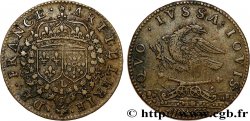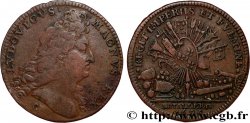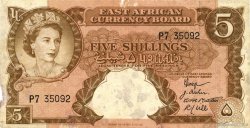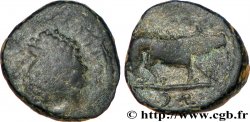fjt_605014 - ARTILLERIE Louis de Crevant, duc de Humières, grand maître de l’Artillerie 1694
non disponibile.
Articolo venduto sul nostro negozio (2024)
Prezzo : 250.00 €
Articolo venduto sul nostro negozio (2024)
Prezzo : 250.00 €
Tipo : Louis de Crevant, duc de Humières, grand maître de l’Artillerie
Data: 1694
Metallo : argento
Diametro : 27,2 mm
Asse di coniazione : 6 h.
Peso : 5,99 g.
Orlo : lisse
Grado di rarità : R1
N° nelle opere di riferimento :
Diritto
Titolatura diritto : LE MARECHAL DE HVMIERES.
Descrittivo diritto : Écu aux armes de Louis de Crevant (1632-1694), marquis puis duc de Humières portent écartelé ; aux 1 et 4, contre-écartelé d’argent et d’azur ; aux 2 et 3, d’argent fretté de sable, dessous, deux canons.
Rovescio
Titolatura rovescio : FLAMMIFERO VOMIT ORE MORTEM ; À L'EXERGUE : ARTILLERIE 1694.
Descrittivo rovescio : Canon tirant.
Traduzione rovescio : Il crache la mort par sa gueule de feu.
Commento
Gouverneur de Compiègne en 1646, en survivance de son père, Louis de Crevant est maréchal de camp en 1650 en Flandre. En 1660, il est gouverneur du Bourbonnais puis, protégé par Louvois, reste en Flandre entre 1667 et 1675. Il seconde Turenne et devient gouverneur de Lille et maréchal de France en 1668. En Hollande en 1675, il devient gouverneur du Hainaut puis Grand maître de l’artillerie en 1685 (il avait le droit de faire supporter ses armes par deux canons adossés avec leurs affûts au naturel, voyez le droit de ce jeton). Chevalier des ordres du roi en 1688, il devient duc et pair de France en 1690. Il se retire en 1691 et meurt à Versailles. Plus que ses succès, c’est son épouse, la belle et riche Louise Antoinette de la Châtre, dame du palais de la Reine qui passe pour avoir contribué à sa réussite..
Governor of Compiègne in 1646, surviving his father, Louis de Crevant was field marshal in 1650 in Flanders. In 1660, he was governor of Bourbonnais then, protected by Louvois, remained in Flanders between 1667 and 1675. He seconded Turenne and became governor of Lille and marshal of France in 1668. In Holland in 1675, he became governor of Hainaut then Grand Master of the artillery in 1685 (he had the right to have his weapons supported by two cannons leaning against each other with their natural carriages, see the right on this token). Knight of the King's orders in 1688, he became duke and peer of France in 1690. He retired in 1691 and died at Versailles. More than his successes, it was his wife, the beautiful and wealthy Louise Antoinette de la Châtre, lady of the Queen's palace, who is said to have contributed to his success.
Governor of Compiègne in 1646, surviving his father, Louis de Crevant was field marshal in 1650 in Flanders. In 1660, he was governor of Bourbonnais then, protected by Louvois, remained in Flanders between 1667 and 1675. He seconded Turenne and became governor of Lille and marshal of France in 1668. In Holland in 1675, he became governor of Hainaut then Grand Master of the artillery in 1685 (he had the right to have his weapons supported by two cannons leaning against each other with their natural carriages, see the right on this token). Knight of the King's orders in 1688, he became duke and peer of France in 1690. He retired in 1691 and died at Versailles. More than his successes, it was his wife, the beautiful and wealthy Louise Antoinette de la Châtre, lady of the Queen's palace, who is said to have contributed to his success.







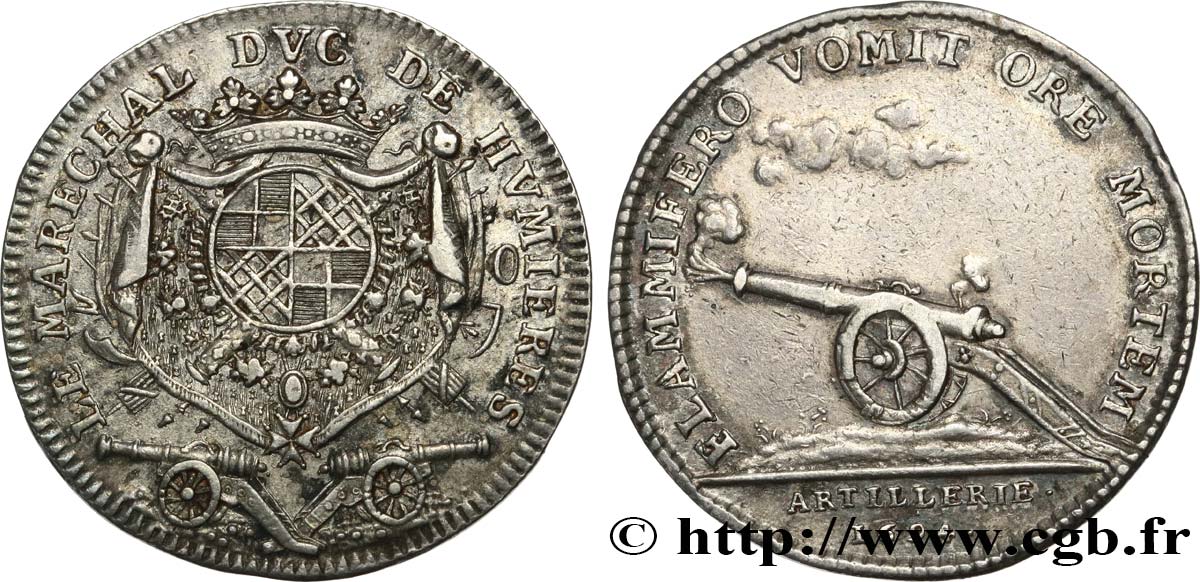
 Segnalare un errore
Segnalare un errore Stampate la pagina
Stampate la pagina Condividi mia selezione
Condividi mia selezione Fai una domanda
Fai una domanda Consegnare / vendere
Consegnare / vendere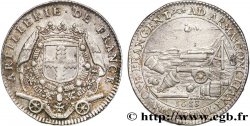
 Descrittivo
Descrittivo
